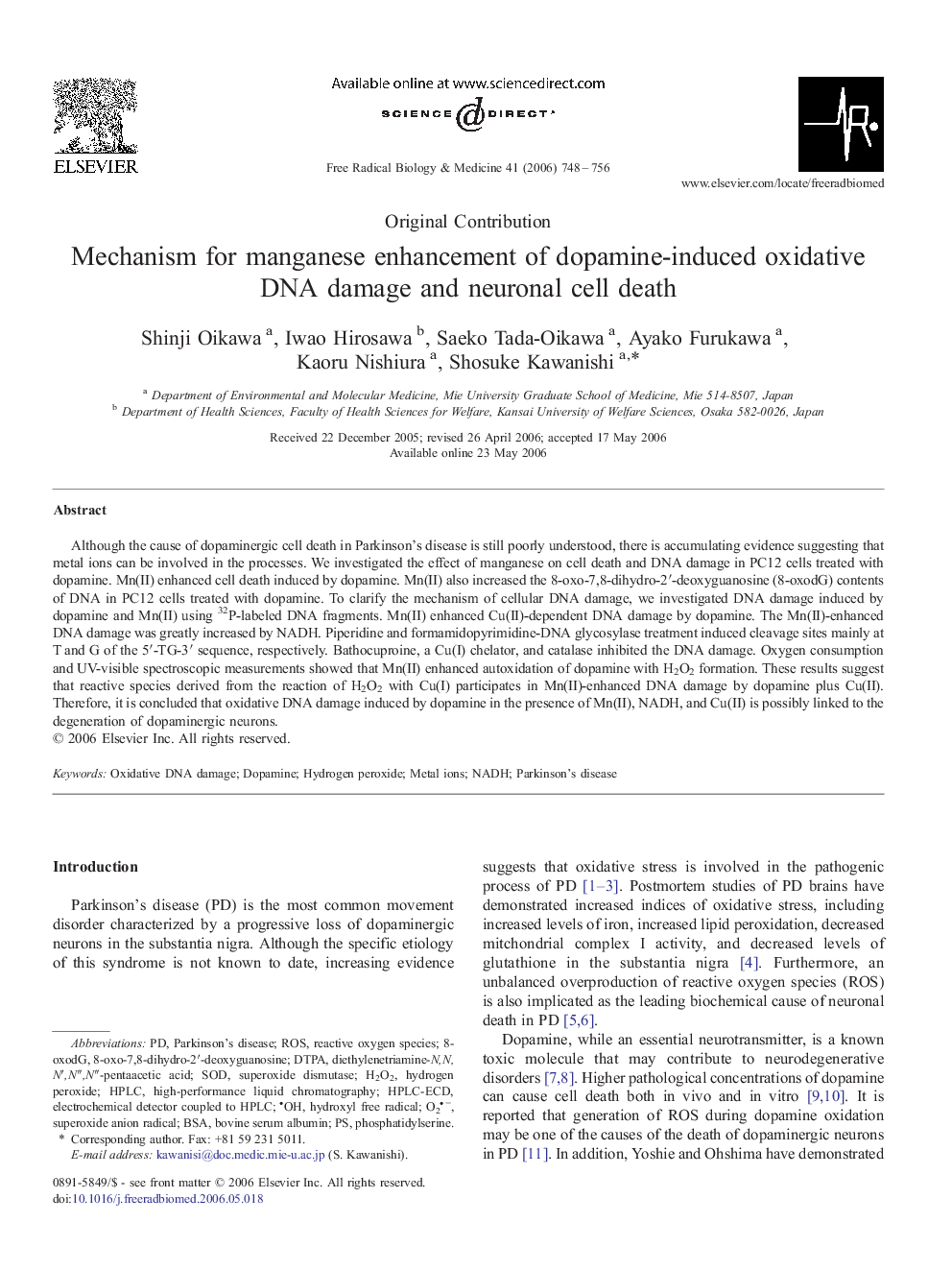| کد مقاله | کد نشریه | سال انتشار | مقاله انگلیسی | نسخه تمام متن |
|---|---|---|---|---|
| 1912040 | 1046857 | 2006 | 9 صفحه PDF | دانلود رایگان |

Although the cause of dopaminergic cell death in Parkinson's disease is still poorly understood, there is accumulating evidence suggesting that metal ions can be involved in the processes. We investigated the effect of manganese on cell death and DNA damage in PC12 cells treated with dopamine. Mn(II) enhanced cell death induced by dopamine. Mn(II) also increased the 8-oxo-7,8-dihydro-2′-deoxyguanosine (8-oxodG) contents of DNA in PC12 cells treated with dopamine. To clarify the mechanism of cellular DNA damage, we investigated DNA damage induced by dopamine and Mn(II) using 32P-labeled DNA fragments. Mn(II) enhanced Cu(II)-dependent DNA damage by dopamine. The Mn(II)-enhanced DNA damage was greatly increased by NADH. Piperidine and formamidopyrimidine-DNA glycosylase treatment induced cleavage sites mainly at T and G of the 5′-TG-3′ sequence, respectively. Bathocuproine, a Cu(I) chelator, and catalase inhibited the DNA damage. Oxygen consumption and UV-visible spectroscopic measurements showed that Mn(II) enhanced autoxidation of dopamine with H2O2 formation. These results suggest that reactive species derived from the reaction of H2O2 with Cu(I) participates in Mn(II)-enhanced DNA damage by dopamine plus Cu(II). Therefore, it is concluded that oxidative DNA damage induced by dopamine in the presence of Mn(II), NADH, and Cu(II) is possibly linked to the degeneration of dopaminergic neurons.
Journal: Free Radical Biology and Medicine - Volume 41, Issue 5, 1 September 2006, Pages 748–756